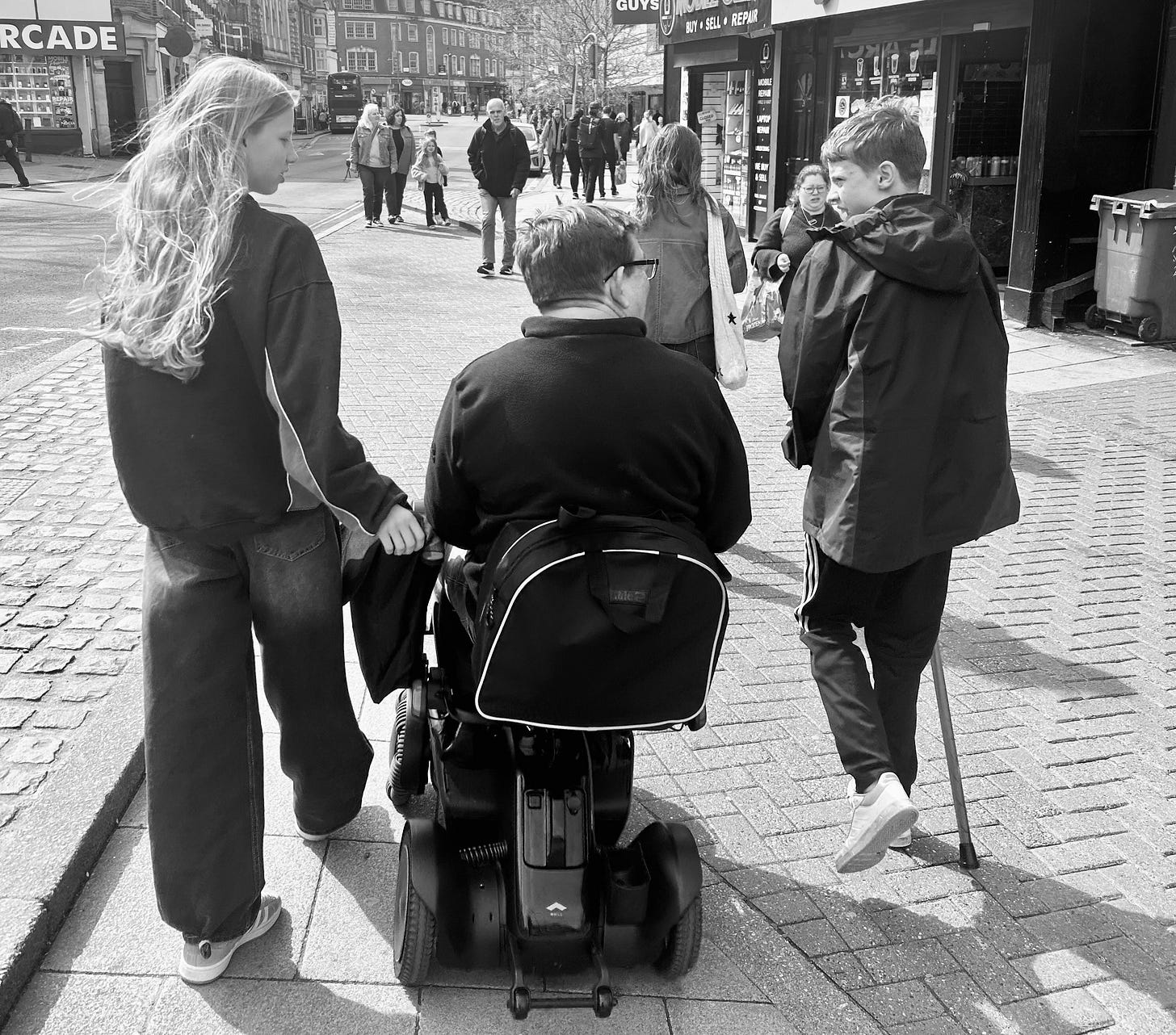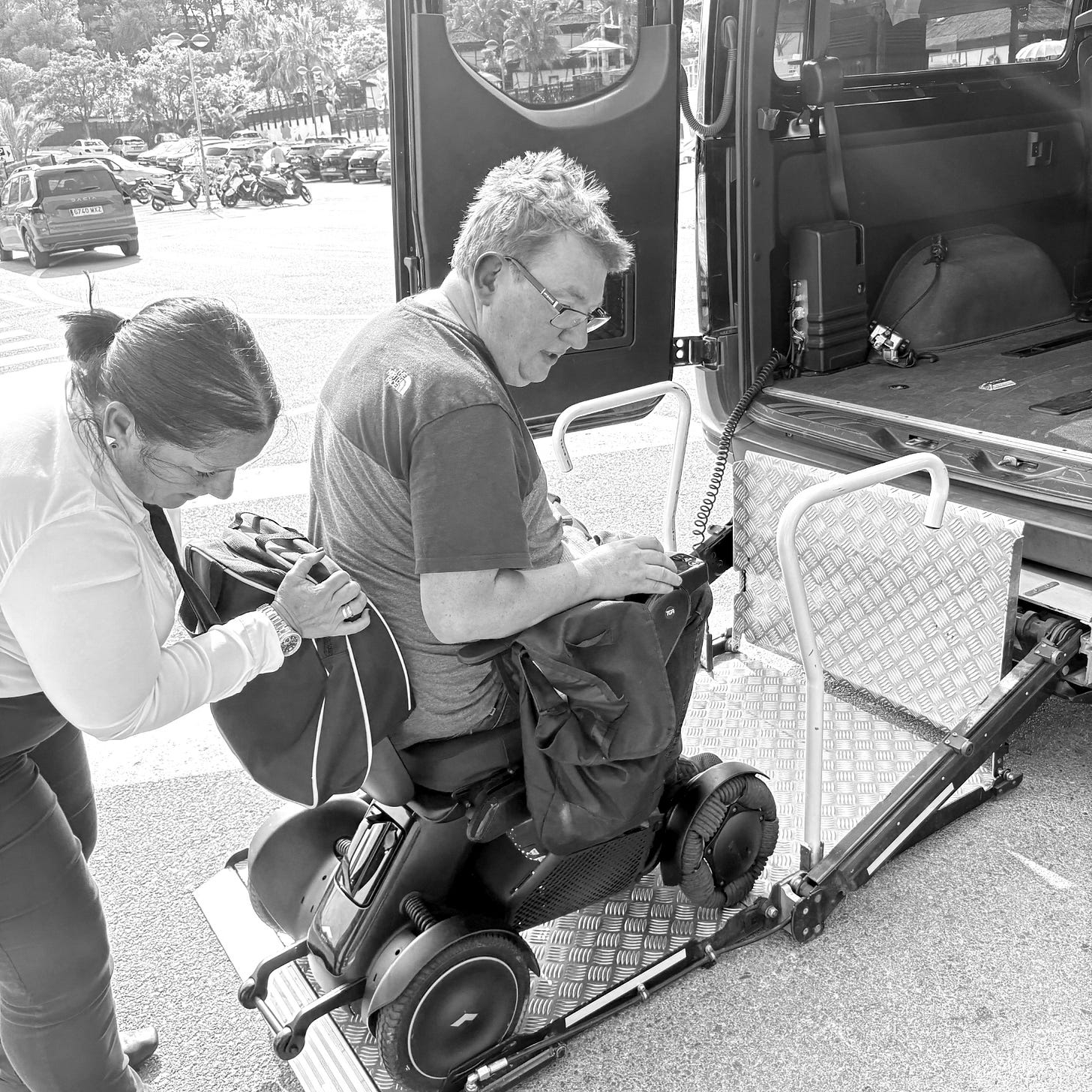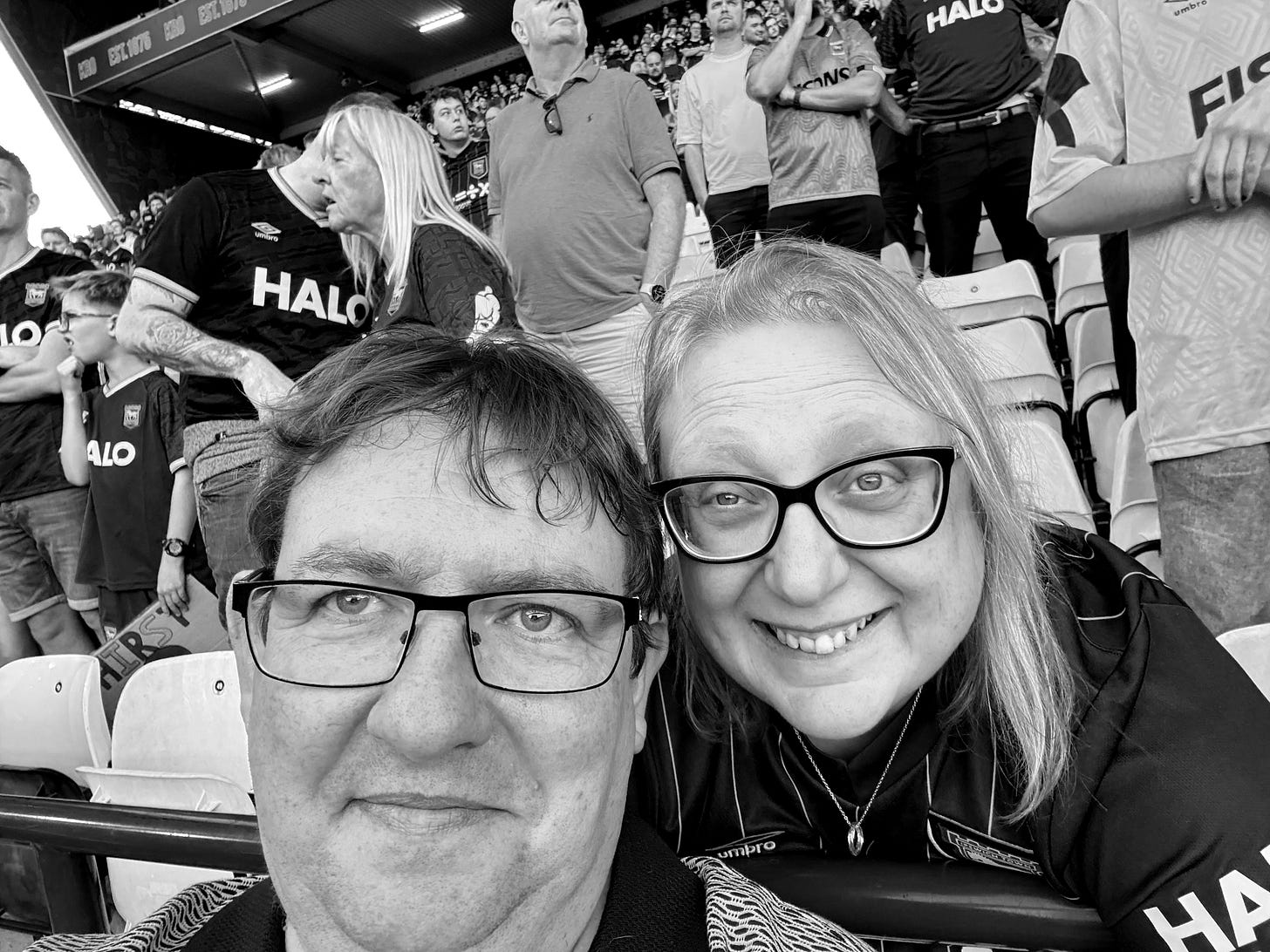The ‘D Word’ That Changed Everything
How accepting disability gave me back independence and community

I was about two years into my long COVID journey, juggling work and life with tiny scraps of energy. Wheelchairs and mobility scooters were for other people, I told myself. I hadn’t even used the “D” word yet. (That’s “disabled,” if you’re wondering.)
The Tipping Point
Then something changed. I started noticing people around me in wheelchairs and scooters, some of them younger than me. I couldn’t help but wonder: what conditions did they have? Surely their situations must have been much more serious than mine. Surely mobility aids were only for people who couldn’t walk at all?
Curiosity (and desperation) led me down a rabbit hole of internet searching, where I discovered entire communities of ambulatory wheelchair users. These were people, like me, who could walk but struggled to because of pain, fatigue, or post-exertional malaise. They spoke openly about accepting their disabilities and learning to use aids without shame.
There it was again: that “D” word.
Me? Disabled? Could I begin to see myself that way?
The moment of truth came when I applied for a blue badge here in the UK, a parking permit for disabled people. To my surprise, it arrived without assessment. When it landed on the doormat, it felt like a lightning bolt of recognition. For the first time, an outside organisation had recognised my illness as a disability. I felt seen, affirmed and, practically speaking, I could finally get out more.
It was then that I realised I needed to fully embrace mobility aids if I was to travel for more than a few yards and spend time with my family.
Enter the Wheelchair
Shopping for mobility aids is daunting. There’s no handbook, no friendly guide to walk you through the maze of options and companies. With my limited energy, I knew I needed an electric wheelchair, but that was it.
The first shock? The price. These machines can cost the same as a family hatchback car. Once I had picked myself up off the floor through shock, with family help and a grant, I scraped together enough to buy a basic model. It wasn’t perfect, but it got me moving.
Eventually, after trying various options, I invested in a lightweight carbon fibre chair with twin motors and a battery that could last around ten miles. It gave me freedom: trips to the supermarket, afternoons out, and the ability to save enough energy to still do other things.
Whilst the freedom was welcome, what I did not realise was that it was also the beginning of a whole new adjustment period.
People’s Reactions
When I first started using my wheelchair, I was hit by an unexpected frustration: I suddenly became invisible. Shop staff, waiters, and random people often directed questions to my wife instead of me, as if sitting on wheels somehow meant I had lost the ability to think and speak for myself.
Other times, people decided to engage me but with humour, blurting out things like, “How did you end up in that then?” or cracking jokes about needing driving licences and getting speeding tickets. Depending on my mood, I either laughed along, recognising their awkwardness. Other times, I felt grumpy and exhausted by it all.
The best reactions, though, are the simplest: when people just talk to me like a human being.
Then there are the careless moments. Like the time I left a football match in Manchester late at night and people kept stepping in front of me until I was forced off the pavement with a nasty jolt. The man who caused it didn’t even apologise; he just melted into the crowd, leaving me shaken and worried about the damage it may have caused.
I’ve also had plenty of near-misses in shops where people stop dead in front of me, seemingly oblivious to the fact I’m controlling a heavy, battery-powered machine with slower reaction times than they might expect. My first wheelchair wasn’t great at stopping quickly, which once led to me accidentally running into someone’s heels who kept stopping. I muttered an apology, but I’ll admit I may have felt a bit smug!
My second chair was far better, easier to manoeuvre, quicker to stop, but the reality remains: the world isn’t built with wheelchair users in mind, and neither are other people’s habits.
Fear of the Curb
Being an ambulant wheelchair user means I can stand up or reach things on shelves. The reactions this gets are often priceless. I’ve been known to quip “I’m cured!” when grabbing something off the top shelf, though sometimes I just glare and carry on.
What really opened my eyes were the barriers that non-walkers must face daily: high curbs, blocked drop curbs, broken lifts and inaccessible shops. Even after careful online research, you can never be sure what obstacles await.
Big Events, Big Joys
One of the unexpected perks of having mobility aids has been having access to big events. Venues often reserve spaces for disabled fans, though you do have to prove your eligibility. Thanks to this, I’ve been able to attend football matches, concerts, and other events I’d otherwise have missed.
A special shoutout goes to my beloved Ipswich Town Football Club. From the moment I started struggling, they secured me a wheelchair space and a parking spot, and they’ve continued supporting me ever since. Those matches have been a lifeline, bringing me moments of joy when everything else felt bleak.
The Battle with Deconditioning
Of course, there is a downside to my newfound freedom. Whilst mobility aids help me conserve energy, long COVID makes exercise nearly impossible. Push too hard, and I crash for days. That means I’ve put on weight, and deconditioning has been a real issue.
The more I use my chair, the more deconditioned I get. The more I walk, even the shortest distances, the more I suffer for it, often for days afterwards.
I do try to use my legs whenever possible, walking short distances at home or pacing myself carefully. The wheelchair actually helps with this, because it allows me to ration my energy. Still, the balance is tricky.
It’s an ongoing battle, one that many chronically ill people will recognise.
The Community
Perhaps the greatest gift of mobility aids has been the community I’ve found. Online and in-person, there are groups where people share tips, swap stories, and simply understand.
At my local football club, I’ve sat alongside a whole spectrum of disabled fans, and those conversations have been invaluable. I have learned loads and made some friends both at home and away. Finding ‘my’ people has made all the difference.
The truth is that chronic illness can be unbearably lonely. Even with a loving, supportive family, there are long days when they’re out living their lives, and I’m left at home. The wheelchair hasn’t solved that loneliness, but the community surrounding it has helped me carry the weight.
Final Thoughts
If you had told me three years ago that I’d be writing about my fleet of mobility aids, I’d have laughed you off. But accepting the “D” word and embracing the tools that come with it has changed my life for the better.
Yes, there are frustrations. Yes, people can be clumsy, thoughtless, or even rude. But, there’s also freedom. There’s joy in the small things again, whether it’s a trip to the supermarket, a Saturday at the football, or simply the ability to go out without collapsing afterwards.
Mobility aids haven’t just given me wheels. They’ve given me back pieces of my life I thought I’d lost forever.



